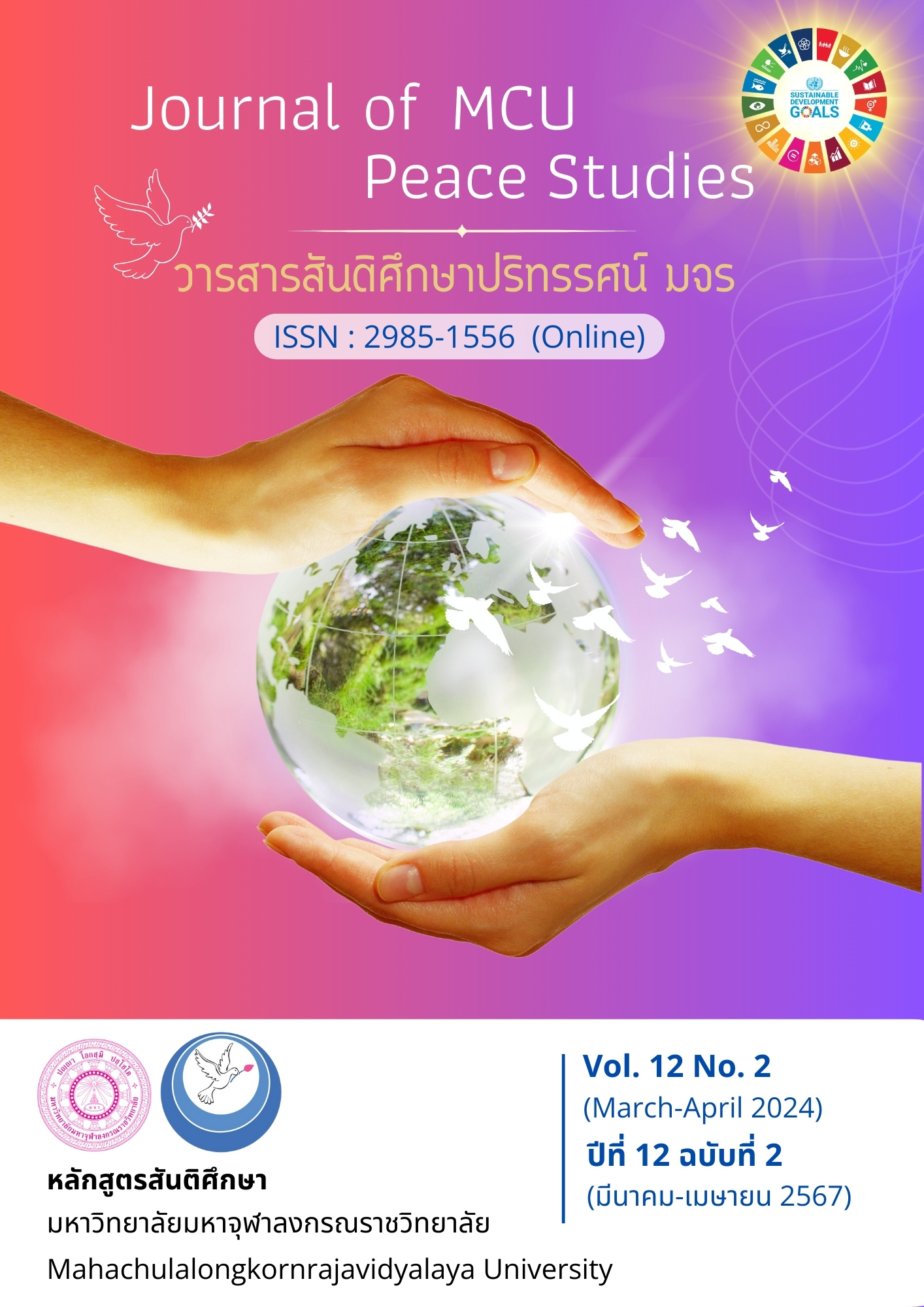Communication Guidelines for Model Mediators in the Public Sector Using Buddhist Peaceful Means
Main Article Content
Abstract
The study consisted of the following two objectives: 1) to explore communication problems and contexts by model public sector mediators, as well as Buddhist peaceful means favorable to communication for mediation; and 2) to present the communication guidelines of model mediators in the public sector based on the Buddhist peaceful means. The study utilized a qualitative research approach based on a field study method and in-depth interviews with key informants from all four regions, two from each region, for a total of eight people.
From the research, it is found the followings: 1. Model mediators in the public sector should be people with a volunteer mindset who seek peaceful coexistence in society. Conflicts that are found usually involve benefits and relationships. Communication problems of public sector mediators include message senders who fail to understand difficult and intricate local language, a lack of mediation skills, the use of thoughtless words that hurt the listeners, and a lack of listening skills. Message receivers' problems include a lack of comprehension in dispute mediation based on the Dispute Mediation Act B.E. 2562, which requires mediators to communicate and explain in order to maintain confidence. The Buddhist peaceful means for dispute mediation include truthful, pleasant, and timely words in order to strengthen unity, benefit society, and promote loving-kindness. 2. The communication guidelines of model mediators in the public sector based on the Buddhist peaceful means must consist of the following components: 1) Communicate in the right language; 2) Communicate with trust; 3) Communicate politely; 4) Communicate with beneficially; and 5) Communicate with kindness.
Article Details

This work is licensed under a Creative Commons Attribution-NonCommercial-NoDerivatives 4.0 International License.
Views and opinions expressed in the articles published by The Journal of MCU Peace Studies, are of responsibility by such authors but not the editors and do not necessarily reflect those of the editors.
References
Anantaprayoon, A., Phramaha Hansa Dhammahaso, & Inthaongpan, P. (2019). A Model of Developing the Mediators by Buddhist Peaceful Means: A Case Study of Chonburi Court. Journal of MCU Peace Studies, 7(Supplement Issue), S266-S280.
Department of Corrections. (2022). Report on Statistics of People in Prison Across Throughout Thailand. Retrieved November 17, 2022, from http://www.correct.go.th/rt103pdf/report_result.php?date=2023-10-01&report=
Likasitwatanakul, S. (2019). Reform The Indifferent Justice Process. Retrieved November 17, 2022, from https://www.the101.world/surasak-interview/
Navachainun, Th., Phramaha Duangden Thitaña-n·o, & Thontiravong, B. (2017). An Application of Buddhist Peaceful Means to Mediation: A Case Study of the Mediators of Mediation Center, Legal Execution Department. Journal of MCU Peace Studies, 5(Special Issue), 87-98.
Office of the National Economic and Social Development Council (NESDC). (2021). Statistics on the Performance of Helping People of the Department of Rights and Liberties Protection Fiscal Year 2021. Retrieved November 17, 2022, from https://opendata.nesdc.go.th/en/dataset/https-drive-google-com-file-d-1iugiaj9ehyiegx3ru7dmtmexso8jcihl-view-usp-sharing
Right and Liberties Protection Department. (2019). Knowledge of Dispute Mediation ACT, B.E. 2562 (2019). Retrieved November 17, 2022, from https://www.tambondonsai.go.th/datacenter/doc_download/a110920154109.pdf
Sompong, S. (2015). A Critical Analysis of Communication Pattern for Peace in the Online Media by Buddhist Peaceful Means: A Case Study of Komchadluek, Net. (Master’s Thesis). Graduate School: Mahachulalongkornrajavidyalaya University. Bangkok.
Sutthirak, W., Phramaha Hansa Dhammahaso, & Wattanapradith, Kh. (2017). An Analysis of the Communicative Way for Peace of the 14th Dalailama according to Buddhist Peaceful Mean. Journal of MCU Peace Studies, 5(Special Issue), 323-335.


